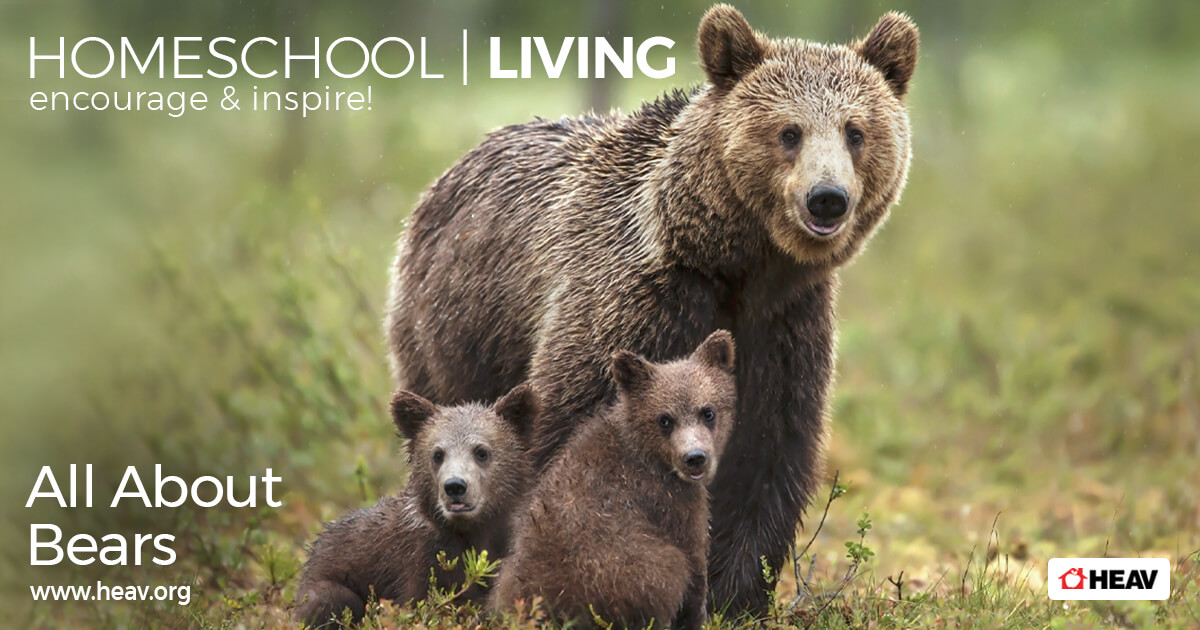Fall Unit Study: All About Bears
Bears are a fascinating animal, but unfortunately some of the fascination stems from misrepresentation and mischaracterisation of bears in the media. With the current black bear population in Virginia estimated at 18,000 to 20,000–up from barely 1,000 in the 1970s!–it’s important for Virginia residents to know how to safely interact with bears and prevent unhealthy situations for both bear and human populations. A unit study all about bears is a great way to introduce the topic to younger students and to allow older students to delve deeper into a variety of subjects. This fall unit study features some great ways to build lessons in subjects like literature, science, geography, and history around a common topic–all about bears!
Bears
You’re really only going to run into one type of bear in the wild in Virginia, and that is the North American black bear. The Virginia Department of Wildlife Resources shares some great information about safely avoiding interaction with bears, preventing bear problems in residential areas, and our responsibility to protect and respect both the bear and human communities.
Did you know that there are only eight different species of bears in the world? BearWithUs features a great overview of the different types of bears, including their sizes, characteristics, and geographical regions. This can be a great way to reinforce a student’s geography knowledge, or introduce the animal classification system (taxonomy).
One of the most well-known facts about bears is their habit of hibernating during the coldest part of the year. Check out this video for a kid-friendly answer to the question “why do bears hibernate?” Challenge your students to think about why humans don’t need to hibernate.
For the Love of Bears
When you’re ready to take your “All About Bears” unit study in a more literary direction, check out this blog post from The Koala Mom about her experience using a popular fictional bear as the focus for a fall unit study that explores geography, language, art, math, and more. The specific study guide she references is available for purchase and online download (and is fairly inexpensive), or you can get creative and run with the idea to draw your own lessons from a favorite childhood book. Also, check out these 20 wonderful books about bears for kids for some more inspiration and language arts study.
Have you ever wondered where the teddy bear got its name? Check out the history of the teddy bear’s creation and production–you might be surprised who its inspiration and namesake is!
If the story of the teddy bear’s origin piqued your student’s interest in its namesake, check out this Homeschool Living for some great ideas for taking a study of Theodore Roosevelt further!
Megan Mora Fuentes
Enjoy this article?
For more insightful and encouraging homeschool related articles, homeschool living tips, and homeschool connections, visit our HEAV blog.









